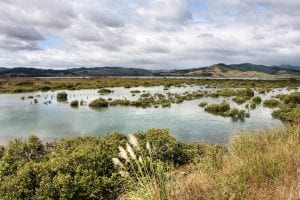 Acting Deputy Agriculture Secretary Michael Young announced the U.S. Department of Agriculture (USDA) is investing up to $15 million in technical and financial assistance to help eligible conservation partners voluntarily protect, restore and enhance critical wetlands on agricultural lands. Restored wetlands improve water quality downstream and improve wildlife habitat, while also providing flood prevention and recreational benefits to communities.
Acting Deputy Agriculture Secretary Michael Young announced the U.S. Department of Agriculture (USDA) is investing up to $15 million in technical and financial assistance to help eligible conservation partners voluntarily protect, restore and enhance critical wetlands on agricultural lands. Restored wetlands improve water quality downstream and improve wildlife habitat, while also providing flood prevention and recreational benefits to communities.
Funding will be provided through the Wetland Reserve Enhancement Partnership (WREP), part of the Agricultural Conservation Easement Program (ACEP), a Farm Bill conservation program. The partnership is administered by USDA’s Natural Resources Conservation Service (NRCS), the leading federal agency for wetland conservation on private lands. Through WREP, states, local units of governments, non-governmental organizations and American Indian tribes collaborate with NRCS through cooperative and partnership agreements. These partners work with tribal and private landowners who voluntarily enroll eligible land into easements to protect, restore and enhance wetlands on their properties.
“These strong, locally led partnerships help improve water quality, prevent flooding, enhance wildlife habitat and provide landowners the financial resources needed to voluntarily conserve our lands,” Young said.
Easements enable landowners to adopt a variety of conservation practices that improve the function and condition of wetlands. The voluntary nature of NRCS’ easement programs enables effective integration of wetland restoration on working landscapes, providing benefits to farmers and ranchers who enroll in the program, as well as benefits to the local and rural communities where the wetlands exist.
This year, NRCS is encouraging partners to propose projects that focus on improving water quality as well as habitat on working landscapes in high-priority areas, ranging from the sagebrush of the West to the Chesapeake Bay. A number of at-risk species rely on wetlands, including the American black duck, bog turtle, wood turtle, spotted turtle, Blanding’s turtle and greater sage-grouse as well as a variety of mussel and fish species.
Proposals must be submitted to NRCS state offices by April 24, 2017. More information is available on the ACEP webpage.










